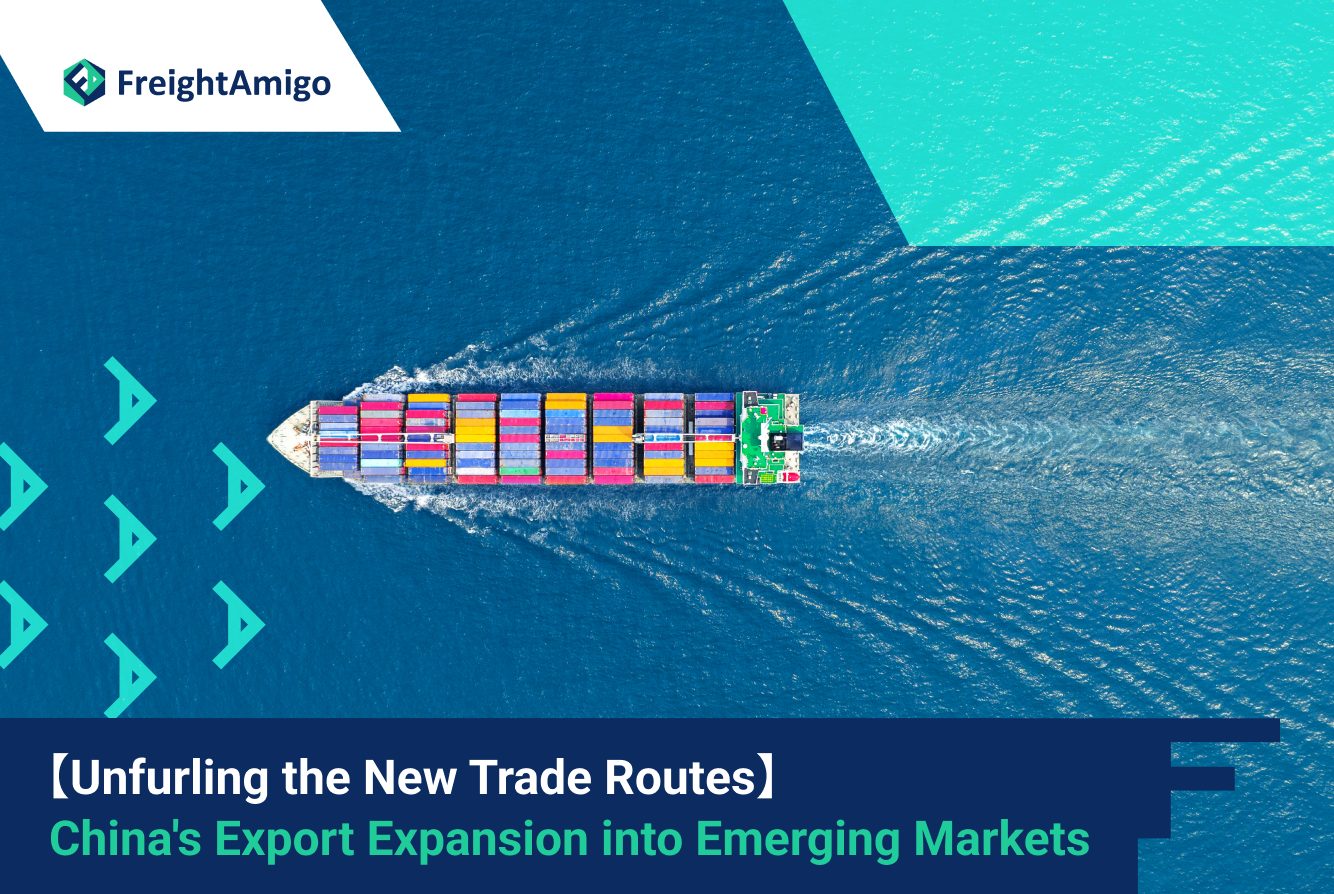Author Name: Tiffany Lee – Marketing Analyst at FreightAmigo
China’s impact on global trade is already monumental, but the nation is now seeking to extend its reach even further, venturing into emerging markets as part of a strategic plan to amplify the import of china and boost export of china. This ambitious plan, known as the Belt and Road Initiative (BRI), is set to redefine global trade routes, connecting China to Europe, Africa, Oceania, and Latin America through a vast network of infrastructure projects.
Want To Compare The Best Express, Air Freight, Sea Freight, Rail Freight & Trucking Rates So As To Have Better Control On Cost?
The Conception of the Belt and Road Initiative
Launched by President Xi Jinping in 2013, the BRI was initially conceived to link East Asia and Europe through physical infrastructure, mirroring the historic Silk Road trade route. However, over the past decade, this vision has evolved and expanded, with the project now reaching out to Africa, Oceania, and Latin America. This extension of China’s economic reach has been met with mixed reactions on the global stage.
The Historical Significance of the Silk Road
The original Silk Road, which emerged during the westward expansion of China’s Han Dynasty (206 BCE–220 CE), was a trade network that connected the Central Asian countries of Afghanistan, Kazakhstan, Kyrgyzstan, Tajikistan, Turkmenistan, and Uzbekistan, as well as modern-day India and Pakistan. The route extended over four thousand miles to Europe, accelerating the process of globalization by connecting Eastern and Western markets.
China’s Vision for the New Silk Road
In 2013, President Xi announced his vision for the BRI during official visits to Kazakhstan and Indonesia. The plan involved two key elements: the overland Silk Road Economic Belt and the Maritime Silk Road. These initiatives aimed to develop a widespread network of railways, energy pipelines, highways, and streamlined border crossings, both westward and southward, to Pakistan, India, and the rest of Southeast Asia.
Unraveling the Potential Roadblocks
Despite the enormous potential offered by the BRI, the initiative has faced opposition due to the spiraling costs of many projects. Critics argue that the BRI could serve as a Trojan horse for China-led regional development and military expansion. Some countries are wary of falling into a debt trap, where heavy loans are taken to fund infrastructure upgrades. This concern has led to some projects being abandoned and political backlash in certain regions.
The Financing Challenge
Another significant challenge is the funding and financing required for the initiative. With an estimated yearly infrastructure financing shortfall of over $900 billion in Asia alone, the question arises as to how these projects will be financed. China has created several financial institutions, such as the Asian Infrastructure Investment Bank (AIIB), the Silk Road Fund, and the New Development Bank, to help bridge this gap. However, these funds still fall short of the estimated $2 trillion to $3 trillion needed annually.
The Role of Third Countries
As China seeks to expand its influence through the BRI, other countries are left to weigh the potential benefits against the risks. India, Japan, Europe, and Russia are among the countries that have voiced their concerns and skepticism about China’s intentions.
India’s Perspective
India has been vocal about its concerns regarding the BRI, viewing it as a strategy for China to dominate Asia. India’s apprehension is further exacerbated by China’s close ties with Pakistan, India’s traditional rival.
Japan’s Approach
Japan, like India, is striving to balance its interest in regional infrastructure development with skepticism about China’s intentions. Japan has committed over $300 billion in public and private financing to infrastructure projects across Asia.
Europe’s Response
Many European Union (EU) member countries have formally signed on to the BRI, with large Chinese infrastructure investments fueling projects such as the renovated port of Piraeus in Greece and the Budapest-Belgrade railway in Hungary. However, some European countries have been more critical of the initiative.
Russia’s Enthusiasm
Russia has become one of the BRI’s most enthusiastic partners, with President Vladimir Putin pledging to link his vision for a “Eurasian Economic Union” with the BRI.
The Role of Hong Kong
Hong Kong, with its strategic location, open and free culture, vast pool of expertise, and entrepreneurial spirit, is in a prime position to play a significant role in the BRI. As a vital financial center and an RMB trading center, Hong Kong could potentially serve as a gateway for the BRI, facilitating trade and fostering cooperation.
Conclusion
The BRI represents an ambitious effort by China to reshape global trade and extend its economic influence. However, it faces significant challenges, including funding gaps, political backlash, and skepticism from other countries. As China continues to navigate these challenges, the success of the BRI will undoubtedly have far-reaching implications for global trade and the future of the import of china and export of china.
There Are Different Options For Cargo Transportation. If You Want To Choose The Most Convenient And Suitable Solution, It Is Best To Have The Full Support Of Logistics Experts! If You Are Planning To Ship Goods Overseas, Please Go To The FreightAmigo Page For Inquiries.
===
Read More:
【Export of USA】 A Gateway to Success and Global Economic Influence
The Key Trade Partners of the USA: Boosting International Commerce
【Export of USA】 US-China Trade War’s Influence on USA’s Export Industry
===
If you have any inquiries on logistics/supply chain, feel free to contact FreightAmigo now:
Chat with us online OR
Phone : +852 28121686
WhatsApp: +852 27467829









































